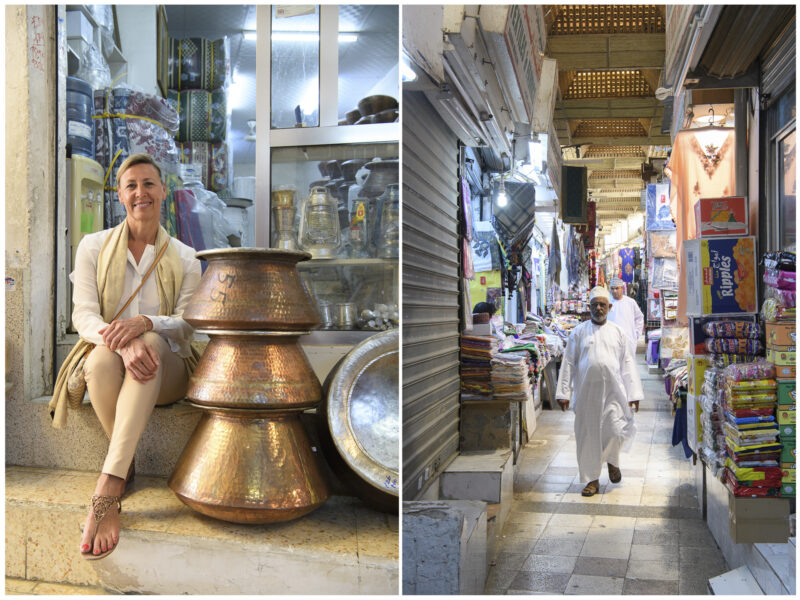The ultimate tour in Oman: Hajar Mountains
Our tour of Oman takes us inland to the rugged Hajar Mountains. We pass dizzying canyons, lush green oases, ancient forts and picturesque ruin villages where time seems to have stood still.
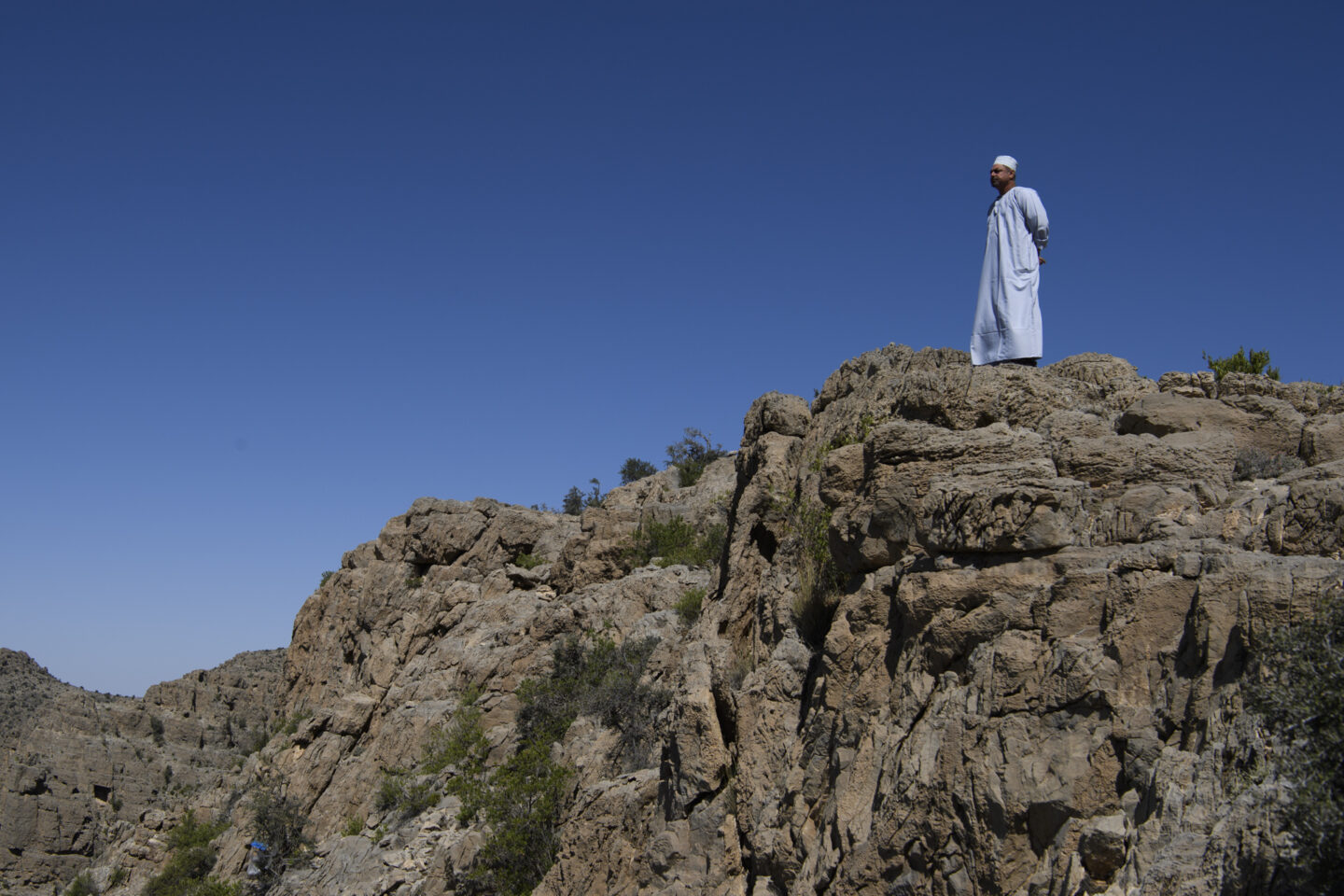
The Hajar Mountains
The Hajar Mountains, also known as the Mountains of Oman, is the mountain range that stretches from the northeastern part of Oman to the far eastern part of the United Arab Emirates. The mountains form the dividing line between the coastal area of the Gulf of Oman and the Arabian desert plateau. The central part is the highest and least accessible. Here you will find the 3,000-meter peaks of Jebel Shams and Jebel Akhdar. It is in this region that we will continue our tour.
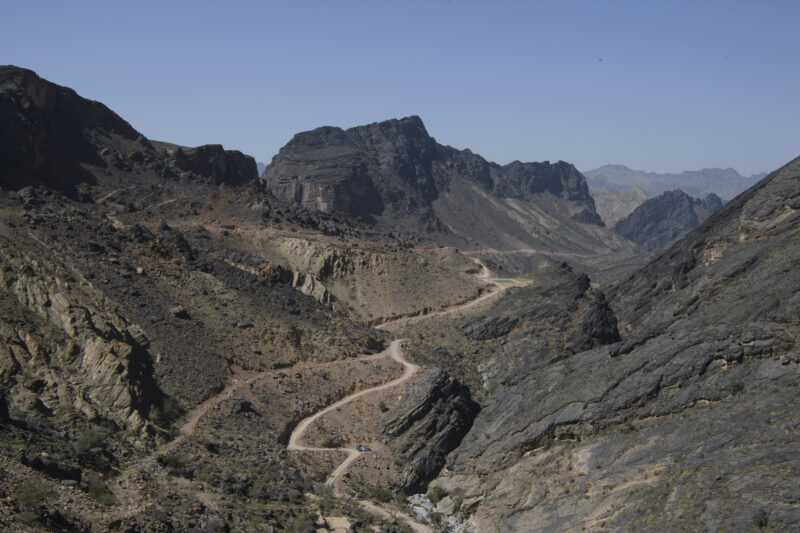
The ruin villages of the Hajar Mountains
Before Sultan Qaboos came to power, life in Oman was very hard. In the mountains, the locals lived in traditional villages with no modern conveniences. Houses were built of clay, a material that is abundant in the region. Clay blocks were dried in the sun. They were stacked to form walls and then plastered into a smooth surface. The walls were supported by wooden beams. The houses were simple and in harmony with the environment. Only wealthier residents decorated their doors with geometric patterns and colorful motifs.
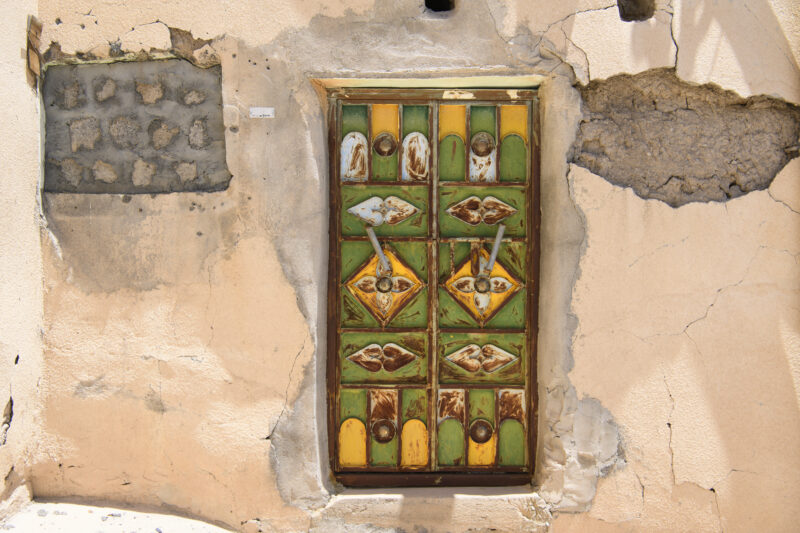
With Sultan Qaboos came the modernization of Oman. Residents became more prosperous and moved to the cities or neighborhoods outside the old village center. The houses in the new neighborhoods are now spacious and modern, built with good taste and using the latest materials. The old villages look abandoned, largely in ruins. They are in and of themselves an attraction to the region, especially for photographers.
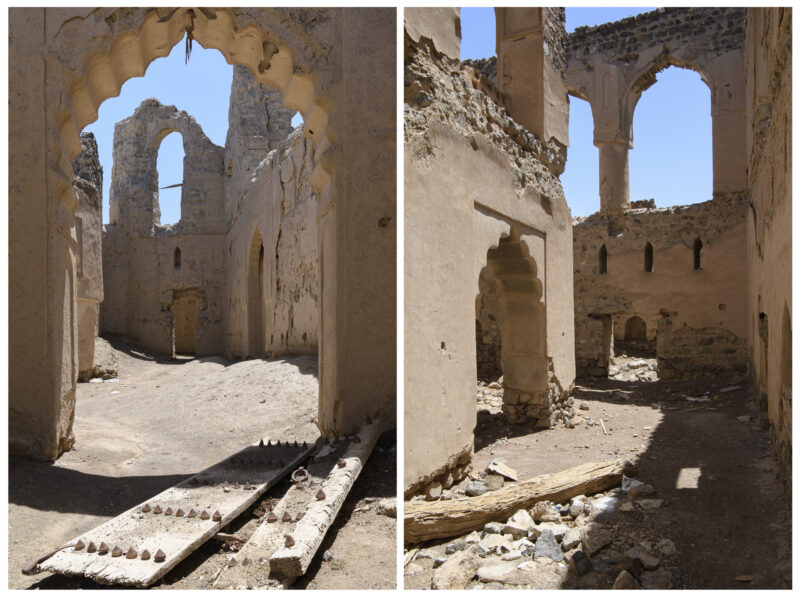
The falaj irrigation system
For thousands of years, the mountain villages of the Hajar Mountains have been supplied with water by an ingenious irrigation system. A falaj, plural aflaj, is a channel dug into the ground into which water flows from the mountains to the oasis. The system collects water from the mountains and prevents it from flowing through the wadis, to the sea. The collected water is directed through a maze of open and closed canals to the villages and surrounding oases. The falaj irrigation system makes agriculture and livestock possible in an otherwise inhospitable area and is still used by the local people.
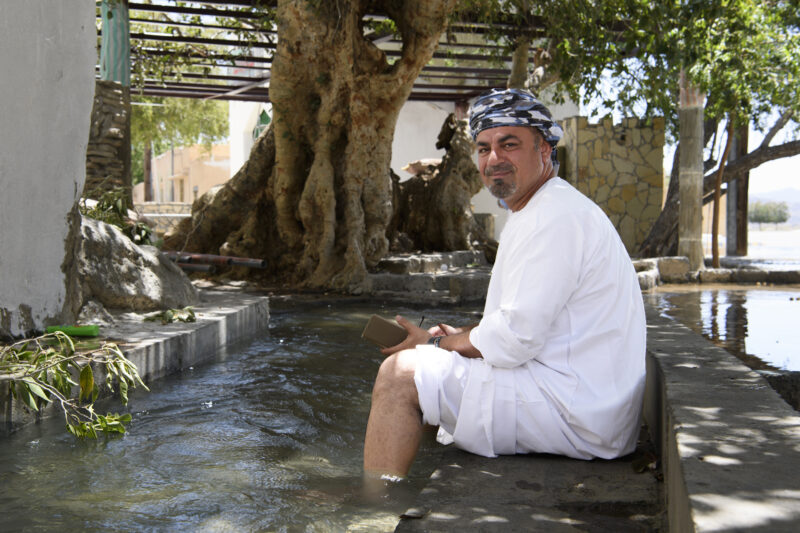
My favorite villages
You can walk for hours among the ruins of abandoned mountain villages and the refreshing oases of the Hajar Mountains. Our guide Kamil knows the region like the back of his hand and is proud to show us the most beautiful places. Here is a list of my favorite villages.
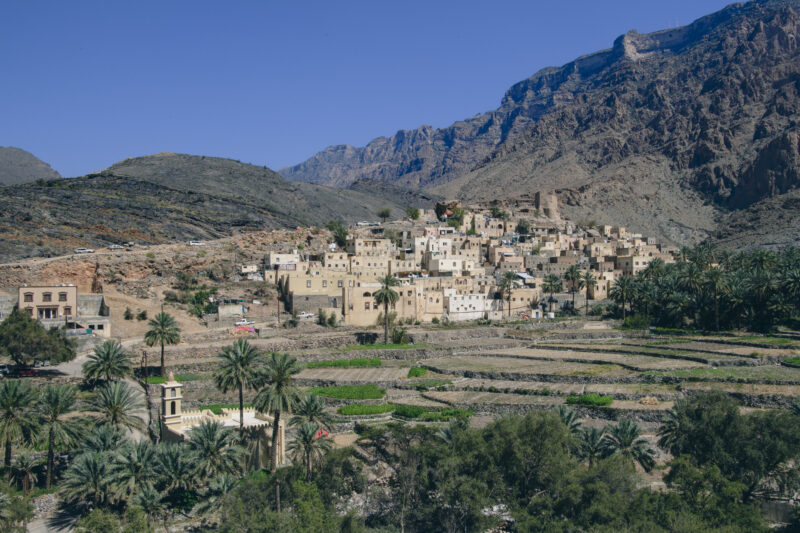
Ibra
The old, abandoned district of Al-Minzafah lies outside the modern city of Ibra. The ruins of the defense towers and the mansions give a good idea of the lost prosperity of the city on the caravan route. Here Didier and I are graciously invited by a local family for coffee.
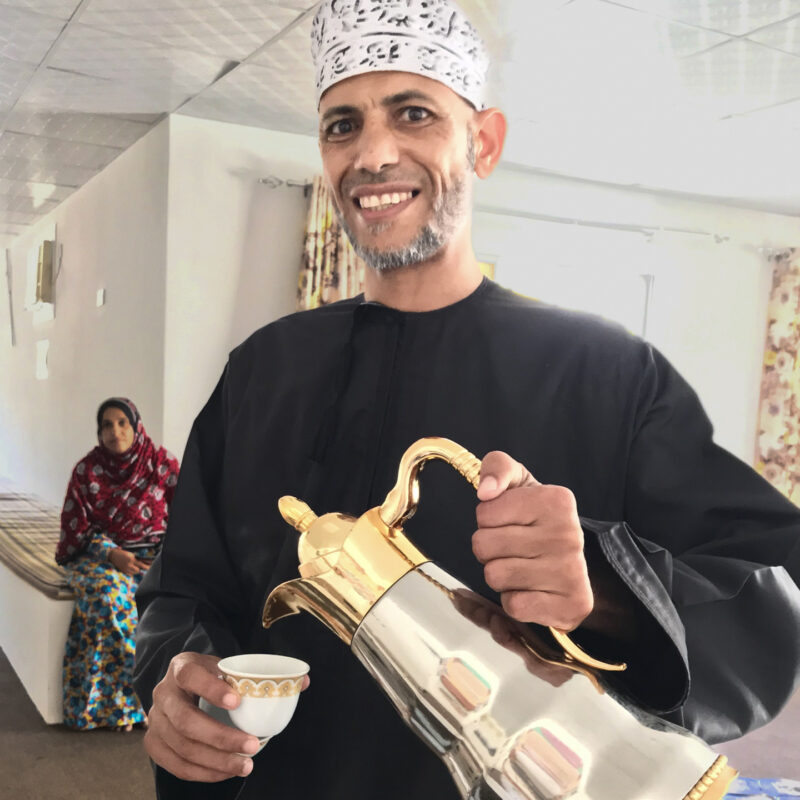
Birkat Al Mauz
The picturesque ruin village of Birkat Al Mauz is nestled between a rugged mountainside and a lush green oasis. It is wonderful to walk in the cool of the date palms with the sound of water flowing in the falaj. Birkat Al Mauz is an ideal place to visit the Al Khatmayn Falaj. The Unesco World Heritage-listed irrigation system is 2.5 kilometers long and has been supplying water to the village and oasis for 2,000 years.
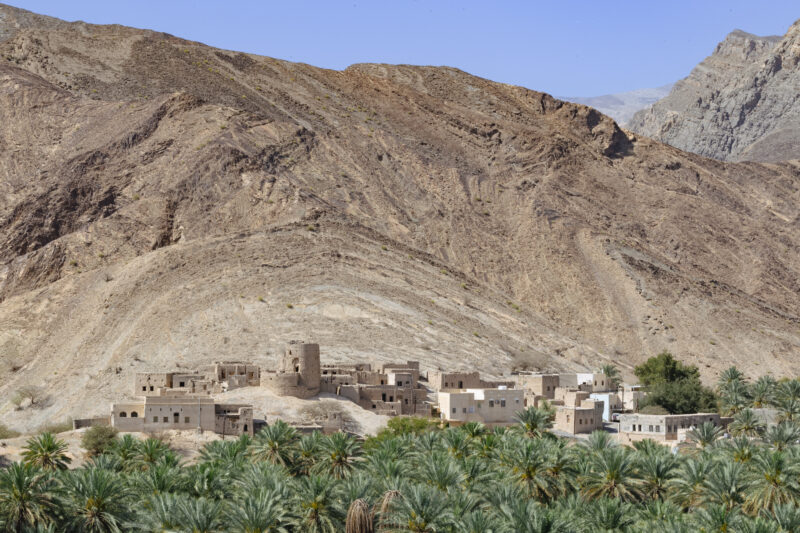
Misfah
Misfah is a charming village that has remained unchanged for centuries. The traditional houses here are made of stone and are not allowed to be torn down. The village, which stretches up the steep side of the mountain, has remained unchanged for centuries and is still inhabited. The local system of falaj irrigates the small, enclosed gardens as well as the large surrounding oasis where bananas and lemons are grown.
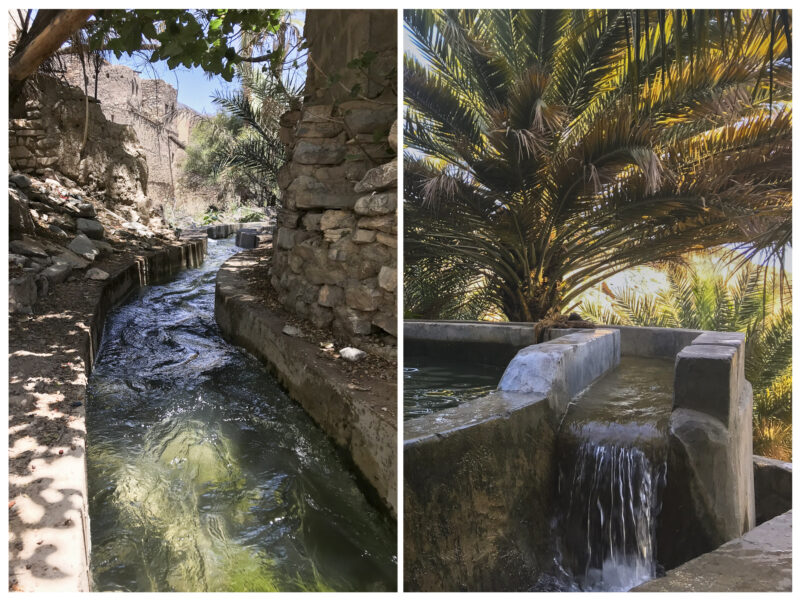
Imti
Imti is somewhat of an outlier among the ruined villages. You will find beautiful examples of traditional clay and stone architecture in this picturesque village. The houses are very solidly built. Some of them date back to the 16th and 17th centuries. The Falaj Al Sawat provides water for the village and the oasis. Imti has been brought into the limelight by several projects undertaken by the Oman Society of Fine Arts. Contemporary art, archaeology and local culture go hand-in-hand, attracting art and photography lovers.
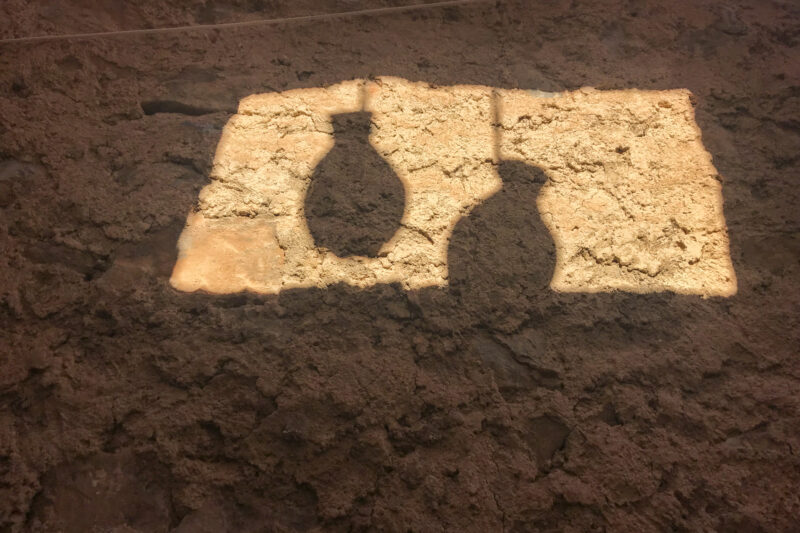
The Al Hoota cave
I If you love rocks and caves, a visit to Al Hoota Cave is a must. This spectacular cave with stunning stalactite formations is unique in the Arabian Peninsula. The underground halls and column formations are more than 2 million years old and 4.5 kilometers long. The cave system includes 4 lakes where a rare blind fish lives. Other inhabitants of Al Hoota cave include bats, snails, spiders and beetles. The rich ecosystem is managed with care and attention. You cannot walk around the cave alone and photography is prohibited. A system of automatic lighting with sensors helps to keep the delicate habitat in balance.
Jebel Shams, the Mountain of the Sun
In the center of the Hajar Mountains is Jebel Shams, which literally means Mountain of the Sun. At 3028 meters, it's the highest mountain in the chain. The summit is forbidden military territory and cannot be climbed. The road to Jebel Shams offers spectacular views. You won't get tired of them. The mountain is surrounded by Wadi Ghul, a canyon that received the title of the Grand Canyon of the Middle East. The breathtaking mountain gorge is 500 to 1,000 meters deep in places. The Jebel Shams Balcony Walk, an easy-to-access trail, allows you to see it up close. Just be aware of the strong gusts of wind that come out of the canyon. They can make you lose your footing.
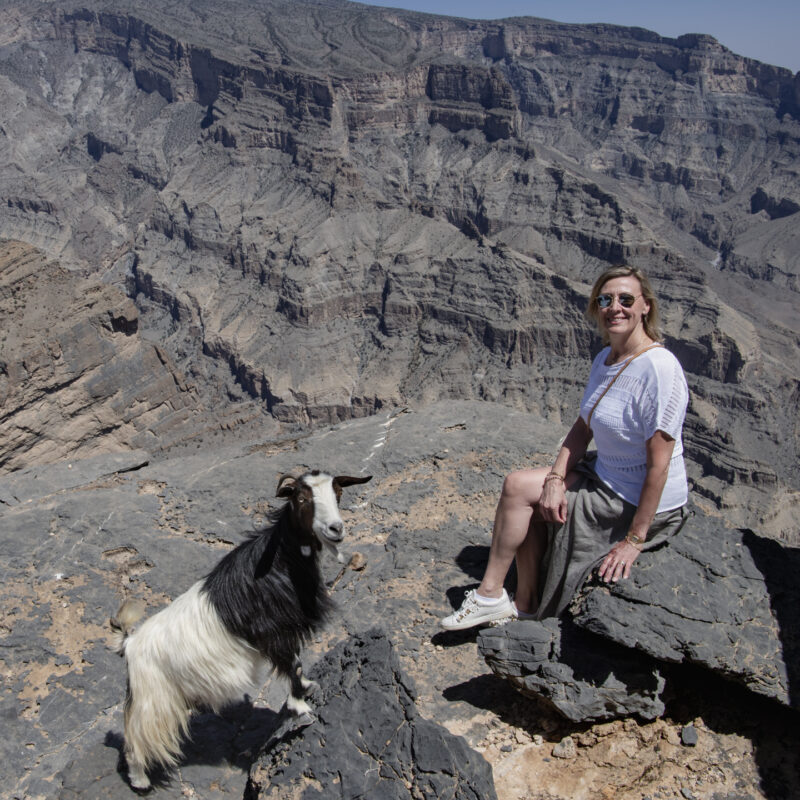
Jebel Akhdar and the Saiq Plateau
The mountainous area around Jebel Akhdar, the Green Mountain, is of exceptional beauty. The limestone mountains with their green oases and terraced slopes invite you to hike and explore. Citrus fruits, pomegranates, dates, bananas and roses grow in abundance.
Our guide takes us to the Saiq Plateau, a fertile 2,000-meter-high plateau where the Damascus Rose grows. We take a relaxing walk along the famous fragrant rose trail from Al Aqr to Al Ayn, the traditional villages where rose water is produced.
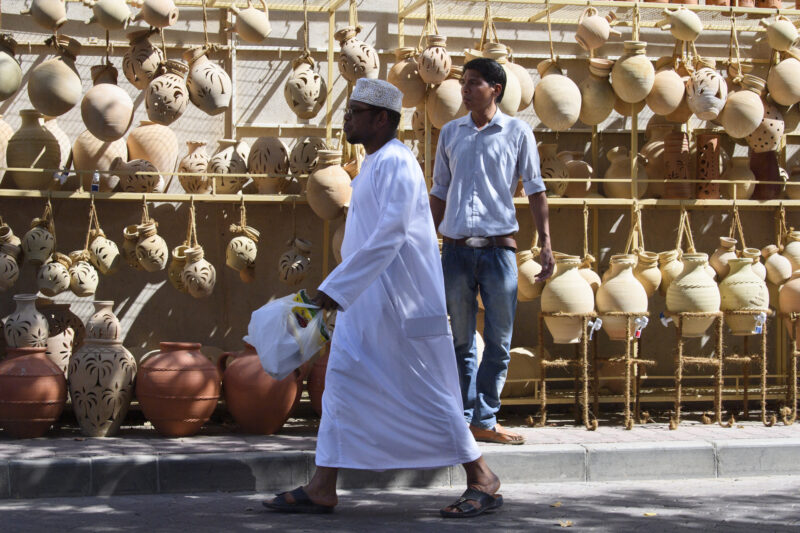
Alila Jebel Akhdar
Our base is the Alila Jebel Akhdar Hotel. Built on the edge of a large canyon, this elegant hotel overlooks the magnificent panorama of Jebel Akhdar. The buildings are built in the local style and blend in perfectly with the wild surroundings. The hotel complex and service are of impeccable standard and the beautiful rooms are spacious and equipped with every comfort. We have built in a day of rest during our tour to fully enjoy this magnificent hotel.

Nizwa: goat market, fort and souks
Nizwa has played an important role as a political, economic and religious center over the centuries. It is one of the oldest cities in Oman where, despite modernization, the old traditions and customs remain intact.
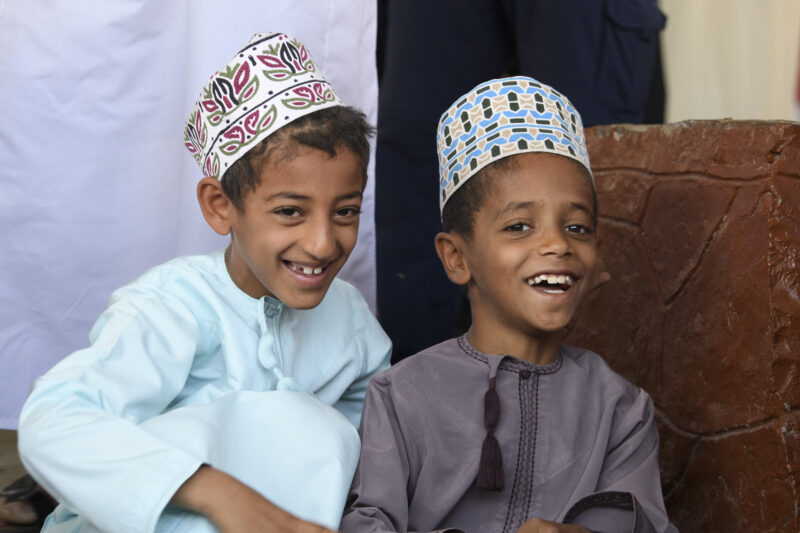
The goat market
The traditional Friday morning goat market is an experience not to be missed. It is the perfect place to catch a glimpse of traditional life in Oman. You need to get up early as the market starts at 7am and parking is difficult.
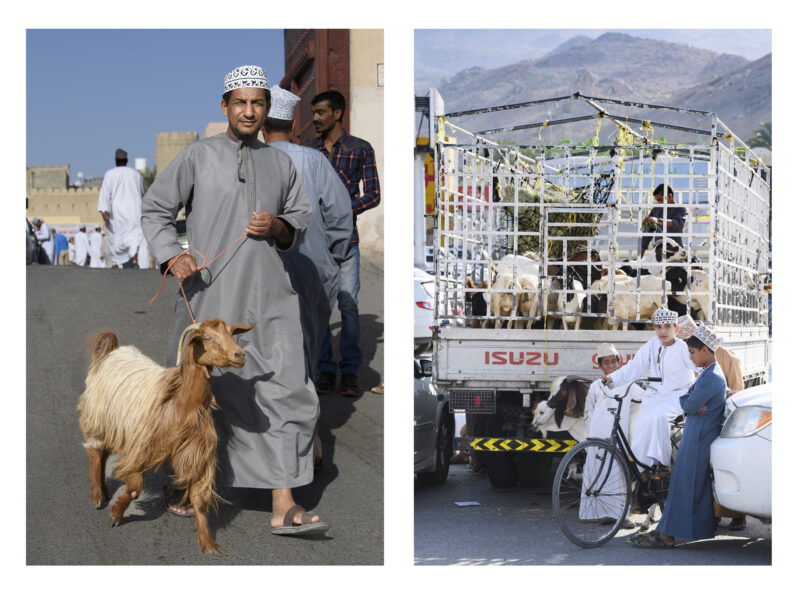
In the large parking lot next to the market, vendors from the surrounding villages and regions come to sell their animals. Goats are the most common, but cows are also traded here. The vendors walk with their animals in a circle around the potential buyers and price their goods. The buyers occasionally stop them to inspect a goat or cow up close. They touch the coat and body, watch the animal's gait, and inspect its teeth. The sale is conducted by auction, and at the end of each round the buyers shout their price. It all seems chaotic and noisy, but there is a clear modus operandi. Several dealers bring their sons and teach them the tricks of the trade. It is a living school for them. Often you can see the boys beaming with happiness with a goat in their arms.
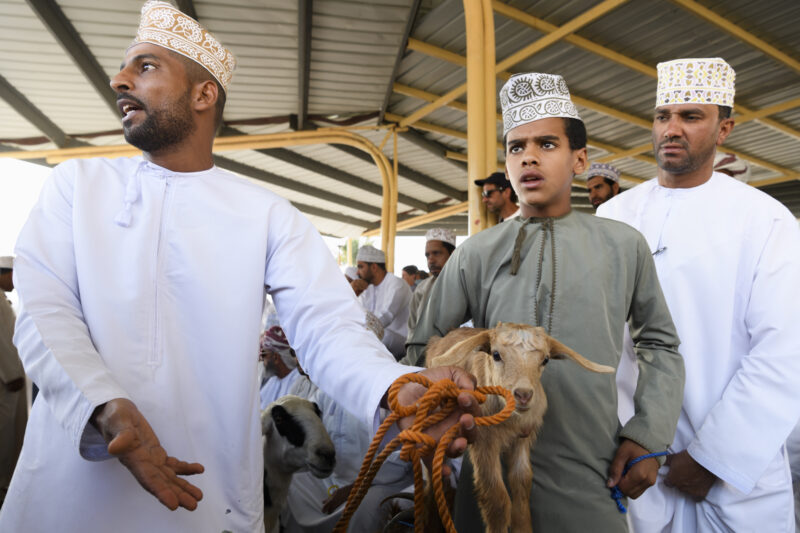
The Nizwa Fortress
The imposing Nizwa Fortress dates back to the 17th century and occupies a central position within the city. The complex consists of many courtyards, spaces and rooms that can be explored during a visit. From the high tower you have a beautiful view of the surrounding date palm oasis.
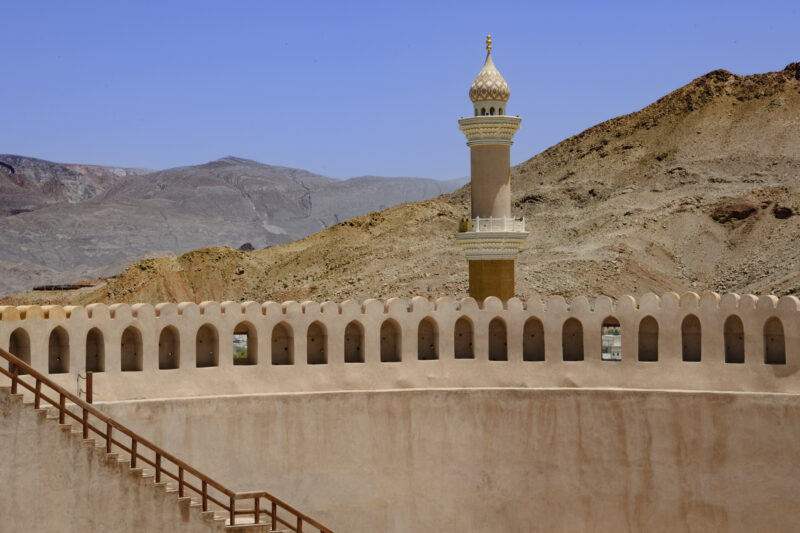
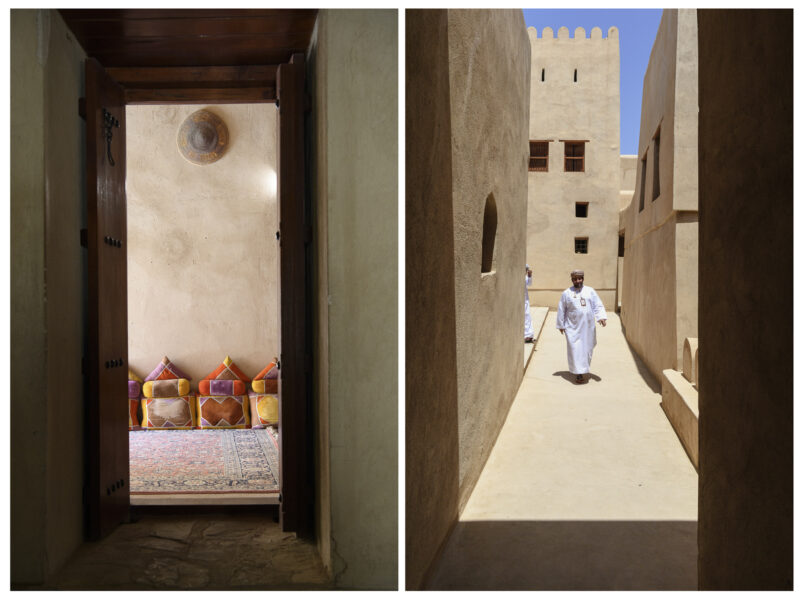
During our visit on Friday, the fort was bustling with activity. A group of men danced in two rows facing each other to the sound of chants and drums. It is a ceremonial war dance and the men hold guns and swords. They also wear a khanjar on their belt around their loins. The khanjar is a silver curved dagger worn only as a ceremonial weapon. The higher the social status of the wearer, the more finely crafted the dagger and sheath.
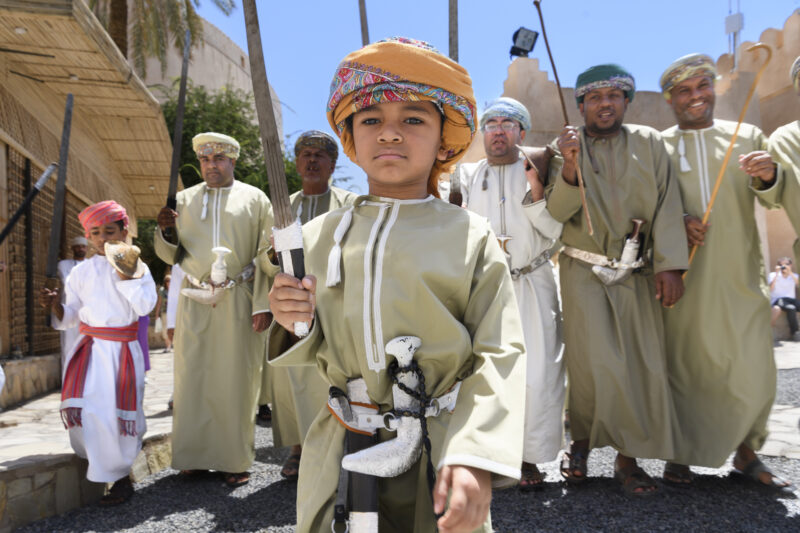
In the courtyard, a woman prepares khubz ragag, Omani bread topped with cheese and egg, on a hot griddle. It takes dexterity and experience to fill and fold the wafer-thin, crispy pancake before it all sticks together. I watch in awe, devouring the delicious dish in moments.
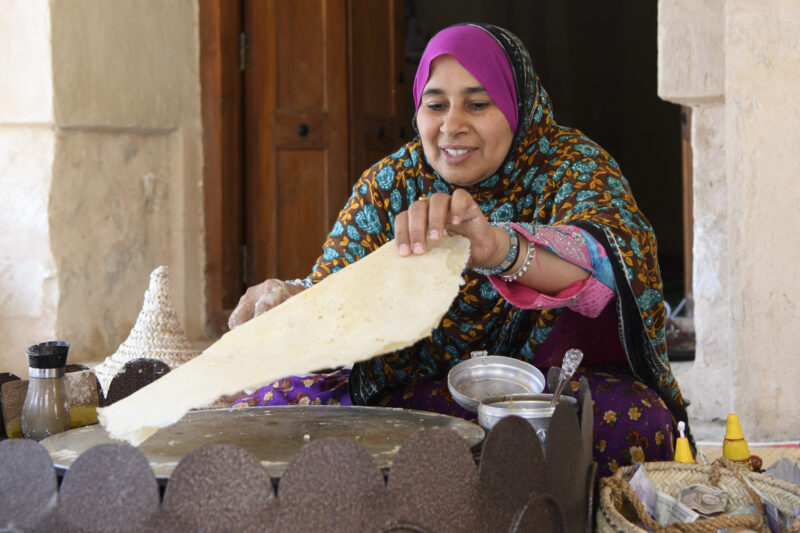
In an adjacent room, women are engaged in traditional handicrafts. They sew, braid ropes, and make natural beauty products while the head woman quotes verses from the Koran.
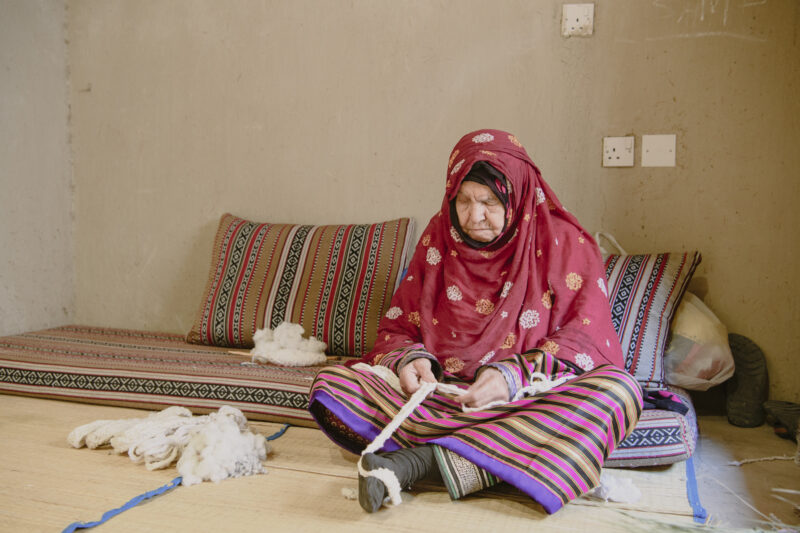
The Nizwa souks
The souks of Nizwa are a delight to explore. In the open-air square inside the walled souk district, men sell poultry, rabbits, honeycombs, fruits and vegetables. In the traditional souk shops, you'll find spices, baskets and jewelry. There is even a souk just for dates. I taste at least 10 varieties and walk out with a stash for home. Then there is the halwa stand with all kinds and sizes of delicious, sweet halwa.
